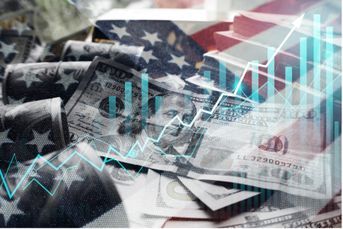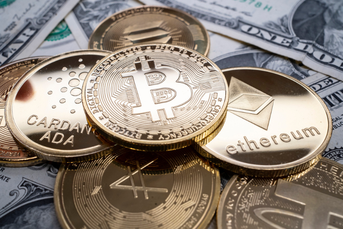Fed’s Williams says bond buying will spur growth
Central-bank purchases of bonds will help spur U.S. economic growth to 2.5% next year and 3.5% in 2014…
Central-bank purchases of bonds will help spur U.S. economic growth to 2.5% next year and 3.5% in 2014 without fueling inflation, according to John Williams, president of the Federal Reserve Bank of San Francisco.
“Our policy measures are having the desired effects,” he said during a recent speech in Salt Lake City. “We have substantial scope to use monetary policy to stimulate the economy without creating too much upward pressure on prices.”
On Oct. 24, the Federal Open Market Committee, aiming to spur growth and reduce unemployment, affirmed plans to buy $40 billion in mortgage-backed securities each month, without specifying the maximum amount to be purchased or how long the program will go on.
Mr. Williams, who holds a vote on policy this year, was among the first Fed officials to advocate open-ended bond buying.
Concern that large-scale asset purchases “might ignite a bout of inflation” is unwarranted because price increases are being held in check by elevated unemployment and an economy that “isn’t operating at full speed,” he said.
“Unemployment is — and should be — a central focus of monetary policy right now,” Mr. Williams said.
“This concentration on getting unemployment down in no way represents a lessening of the importance of price stability,” he said, adding that inflation may slow well below the Fed’s 2% goal if the U.S. recovery falters.
“SLIGHTLY BELOW’
Unemployment will stay above 7% at least until the end of 2014 and inflation will remain “slightly below 2% for the next few years,” Mr. Williams said.
Policymakers should focus more on the full-employment aspect of the Fed’s dual mandate than on price stability, he said.
Although inflation persistently above 2% was the “most pressing concern” from the late 1960s through the early “90s, the “situation is very different” today, with inflation averaging 2% and unemployment “far above” the maximum tolerable level for four straight years, Mr. Williams said.
The Fed may need to expand its large-scale asset purchases after the scheduled expiration in December of its so-called Operation Twist stimulus, he told reporters Sept. 24.
Mr. Williams didn’t mention such an extension in his speech.
The Fed bought $2.3 trillion in securities in its previous two rounds of bond buying and has swapped its short-term Treasuries with longer-term securities in Operation Twist.
VITAL SIGNS
The labor market is showing signs of life.
U.S. companies hired 171,000 workers last month after a 148,000 gain in September that was more than first estimated, the Labor Department said Nov. 2. The payroll report topped the most optimistic forecast in the Bloomberg survey, in which the median called for an advance of 125,000.
Even though more people entered the labor force, the jobless rate remained “essentially unchanged” at 7.9%, the Labor Department reported.
The world’s largest economy expanded at a 2% annual rate in the third quarter after climbing 1.3% in the prior quarter, the Commerce Department said last month. Economists estimate that gross domestic product grew 1.8% in the third quarter and will grow 2% in the fourth, according to the median of 75 estimates in a Bloomberg survey.
Recent economic reports also showed resilience as U.S. manufacturing expanded more than forecast, consumer confidence rose to a four-year high and fewer Americans filed claims for unemployment benefits.
The Institute for Supply Management’s factory index rose to 51.7 last month, the highest since May, from 51.5 in September. The Conference Board’s sentiment index increased to 72.2, the highest since February 2008.
Applications for jobless benefits fell 9,000 to 363,000 in the one-week period ended Oct. 27, the Labor Department said.
The economic recovery may be restrained by Europe’s debt crisis, concern about a U.S. fiscal contraction and doubts about economic growth among consumers and businesses, Mr. Williams said.
In the first round of quantitative easing, starting in 2008, the Fed bought $1.25 trillion in mortgage-backed securities, $175 billion in federal agency debt and $300 billion in Treasuries. In the second round, announced in November 2010, the Fed bought $600 billion in Treasuries.
The FOMC, at its Oct. 23-24 meeting, while maintaining QE3, repeated that it will probably hold the benchmark interest rate near zero through mid-2015.
Learn more about reprints and licensing for this article.








